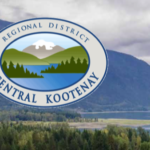Column: Forestry issues
We’ve heard a lot in the news lately about the challenges facing the oil sector, but much less about the serious problems confronting another natural resource industry—forestry.
Two years ago, the United States placed significant import tariffs on softwood lumber. Those illegal tariffs are still in place, yet we hear almost nothing in the news about efforts to remove them or the effects they are having on the Canadian industry, despite daily articles on US-Canada trade in other sectors.
The mountain pine beetle destroyed much of the timber supply in British Columbia in the past 20 years and has now spread across Alberta and is threatening to enter Saskatchewan. Spruce budworm has reappeared in epidemic numbers in Quebec and is being fought in the Maritimes after a few decades of quiescence.
Every year seems to be a forest fire catastrophe in Canada now; British Columbia alone spends hundreds of millions of dollars every summer just to battle the blazes. The losses to forest companies and rural communities are incalculable.
One of Canada’s iconic wildlife species, the caribou, the magnificent head on the back of our quarter, is disappearing from most parts of its range in Canada. Forestry is implicated as one of the causes of that decline, and governments across the country are considering reductions in annual cut to forestall further impacts on the species.
The industry has benefited from high lumber prices during this time of disruption, with prices pushing to the high $500 range this spring, fuelled by a strong US market. But lumber prices have dropped dramatically in recent months to just above $300 as housing starts have fallen in the US, and local mills are feeling the crunch.
So, what can the federal government do to help the forest industry?
It should settle the softwood lumber dispute that has dragged on far too long. I’m happy that the Chapter 19 remedies of NAFTA are retained in the new USMCA, remedies that allow Canada to fight US tariffs directly.
Forest stands have changed since indigenous practices that kept forests open and fuel loads low were stopped in the late 1800s, and Smoky-the-Bear fire suppression began in the mid-1900s. Fuel loads are now dangerously high and create ideal conditions for catastrophic fires.
The Filmon report, commissioned after the devastating BC fires of 2003, identified 685,000 hectares of forest that needed to be treated, but 12 years after the report was written, BC had only dealt with 8 percent of the total.
These treatments are not just needed in BC; they are needed across the country wherever communities touch on forests. The federal government could provide significant funds to provinces and municipalities to carry out these thinning operations, funds that would in turn create jobs for forest sector workers, fibre for mills, and fire safe communities.
As I’ve suggested in my private members bill, C-354 (now in the Senate), government procurement powers could be used to build more large government buildings out of wood. This would store carbon throughout the life of the building, presuming that the carbon balance in the forests during and after harvest was neutral to positive.
To make sure of that, the federal government needs to invest more in research around the role our forests could play in helping us sequester carbon dioxide and reach our Paris targets. If we want credits for the carbon captured by our forests and wetlands, we must be sure that these credits are real and deserved, and we must adapt our forest practices to ensure that they are being maximized.


























Comments